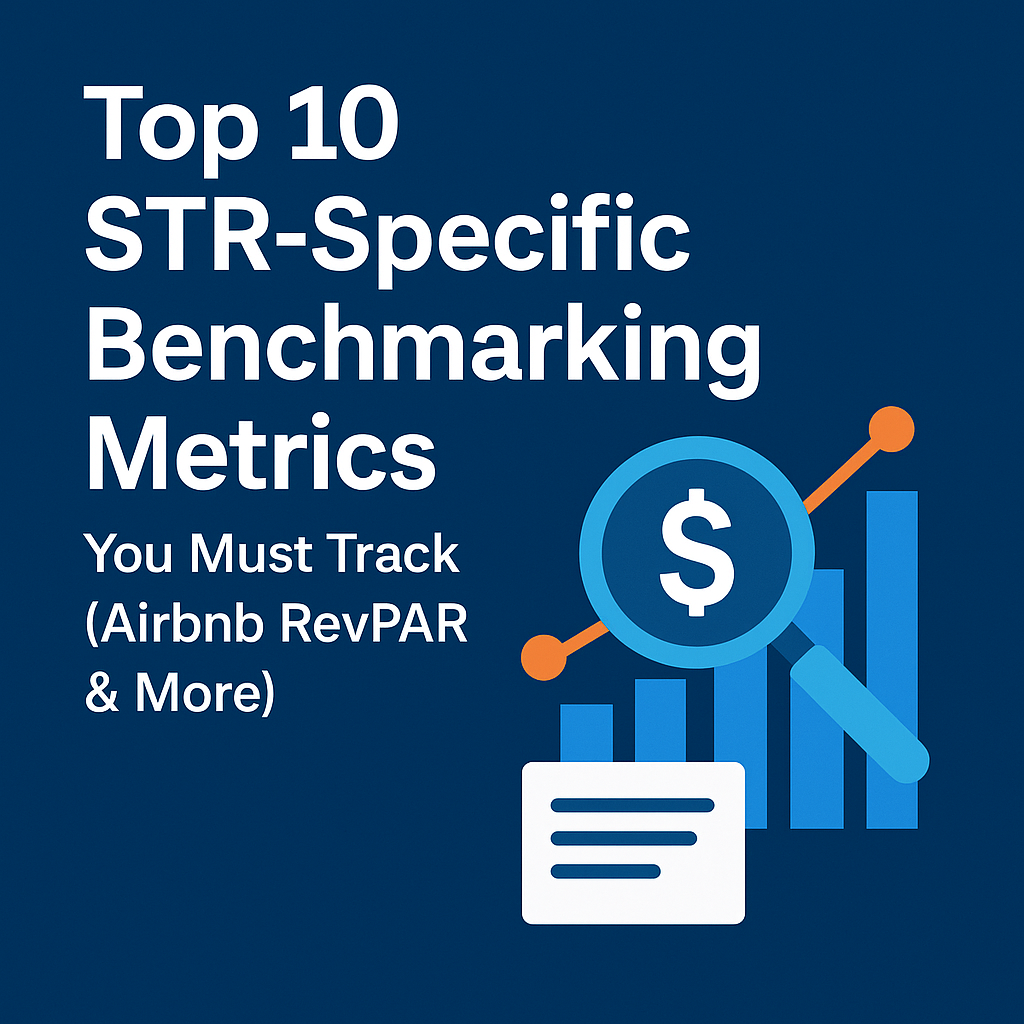
Part 1 of discovering the essential STR-specific benchmarking and key metrics like Airbnb RevPAR, Occupancy Rate, and ADR to skyrocket your rental income. A must-read for short-term rental hosts and investors.
In today’s booming short-term rental (STR) economy, benchmarking your Airbnb or vacation rental against industry-standard metrics is more important than ever. Whether you're managing a single property or overseeing a portfolio, knowing how to analyze and act on STR-specific KPIs can drastically improve your profitability.
Let’s uncover the key metrics—especially Airbnb RevPAR, ADR, Occupancy Rate, and more—that smart hosts use to make data-driven decisions.
Benchmarking is the process of comparing your property’s performance against other similar listings or industry averages. In STRs, this includes tracking performance across metrics like revenue, booking pace, pricing, and occupancy to understand where you stand.
By comparing your Airbnb or VRBO property’s performance to your competitors, you can:
Here are the most essential metrics every host or property manager should monitor:
RevPAR = (Total Revenue / Total Available Nights)
This metric tells you how much revenue you earn per night your listing is available. It combines ADR and Occupancy to give a full-picture performance view.
The percentage of nights your STR is booked vs available.
Occupancy = (Booked Nights / Available Nights) × 100
The average amount you earn per booked night.
ADR = Total Revenue / Number of Booked Nights
This shows the average duration of bookings, helping you plan for cleaning and staffing.
The number of days between when a reservation is made and the check-in date. Longer booking windows can indicate strong forward demand.
High cancellation rates can disrupt revenue forecasts. Keep this under 10% for optimal performance.
Breaks down income generated per reservation.
Helps understand which booking channels are most profitable.
Marketing + OTA fees = Guest Acquisition Cost. Essential for profitability analysis.
The higher your direct bookings, the less you pay in OTA fees like Airbnb’s 14%.
A strong indicator of guest satisfaction and brand strength.
Let’s say:
These tools offer market benchmarking so you can compare your RevPAR with comps in your area.
These platforms sync with Airbnb, VRBO, and direct booking channels to provide real-time benchmarking data.
We've only scratched the surface so far. There are still several important aspects to cover—like common mistakes in tracking STR metrics and more. We’ll dive into those in our next part. Stay tuned!